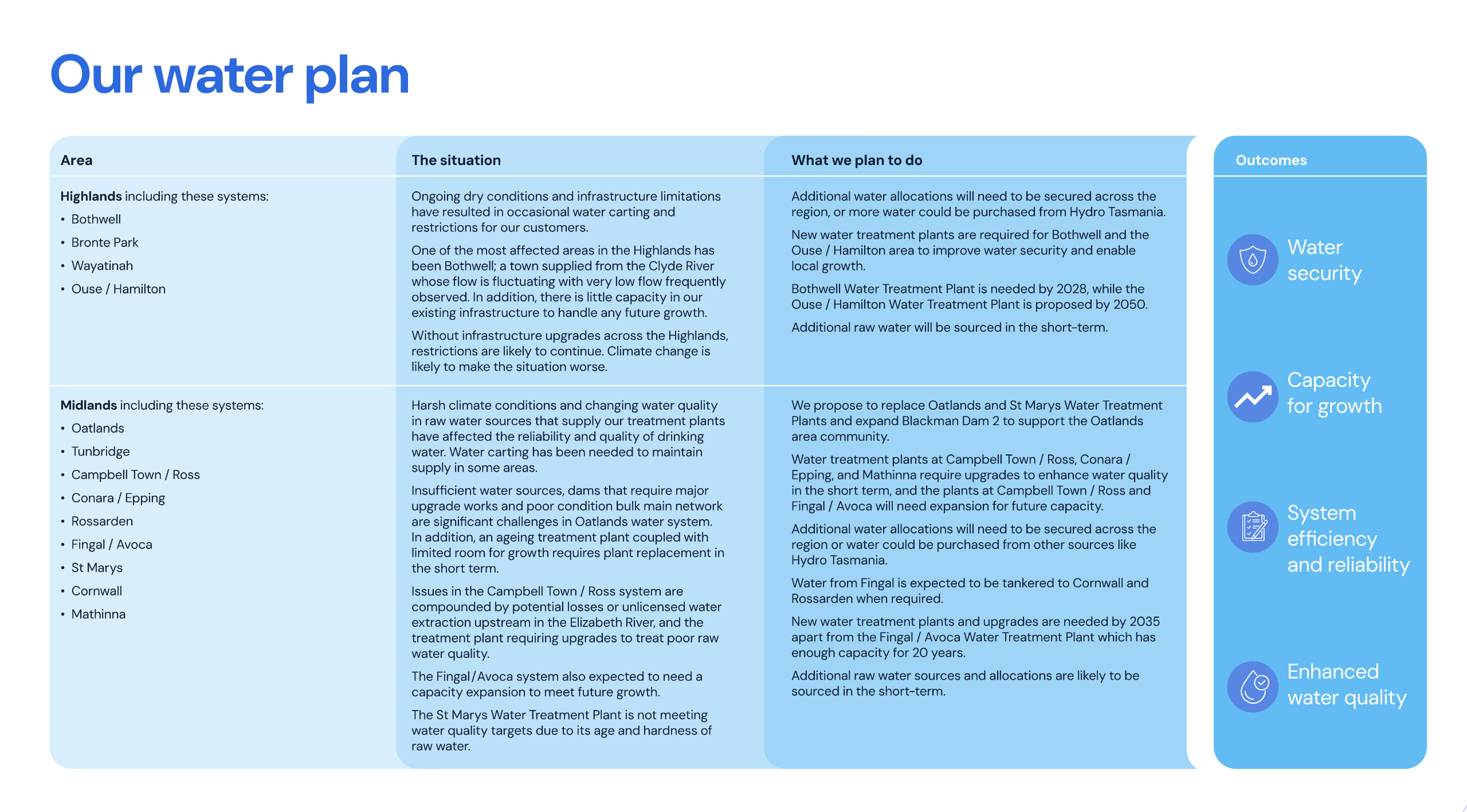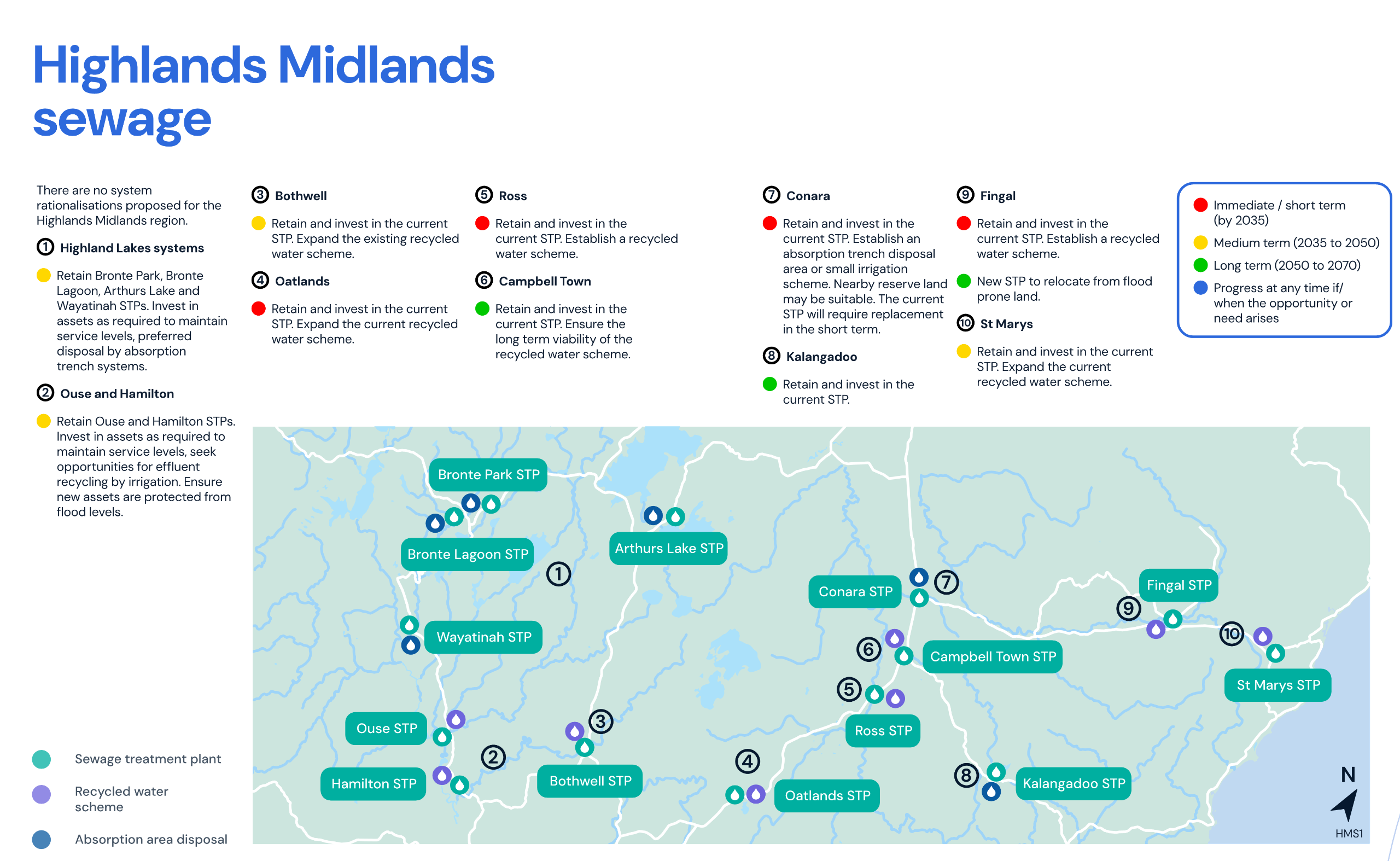Current services
The Highlands Midlands region has 13 water and 14 sewerage systems as well as recycled water schemes to support the region’s residents, businesses and farms. In addition to the TasWater systems, Tasmania Parks and Wildlife Service owns and operates small sewerage schemes in natural areas.









